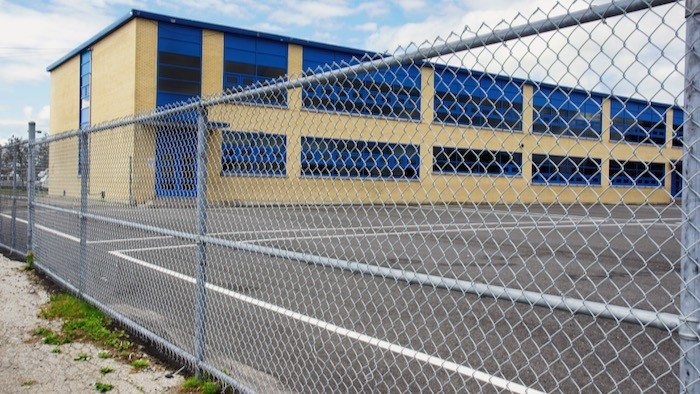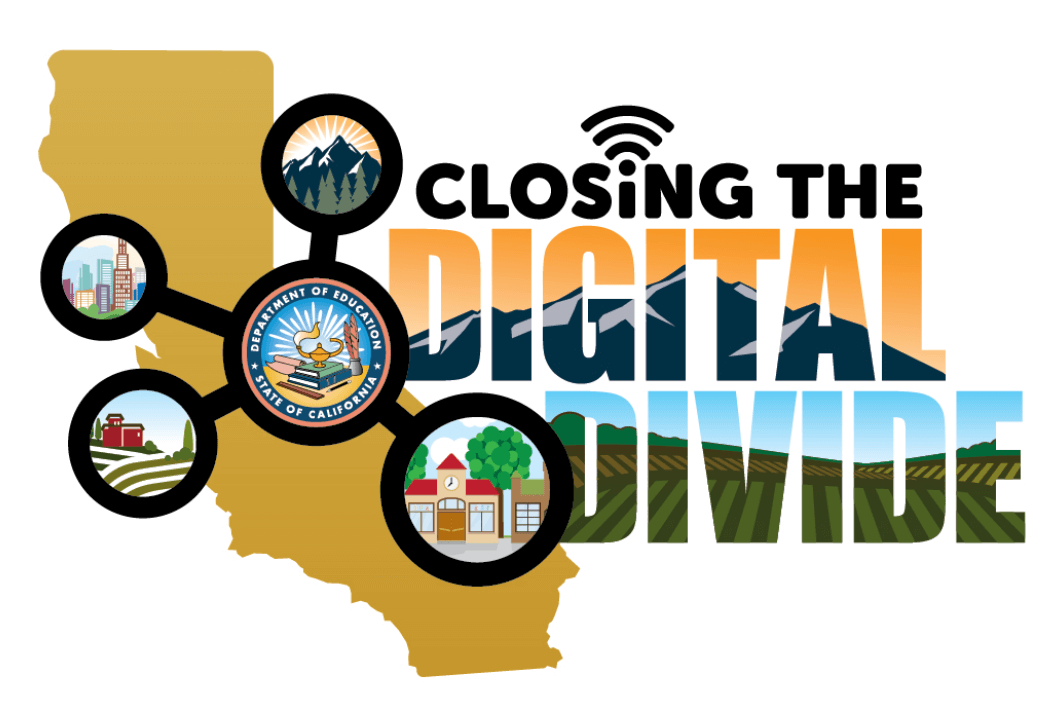Can a Crisis Finally Close the Digital Divide?

Digitally Fenced Out
Schools now depend on technology to deliver lessons and connect students. Unfortunately, millions of students lack good internet connections and devices at home. Effectively, they are fenced out of the digital campus.
The digital divide is not new. Low income families, students of color and students living in rural areas have lacked home access to online learning for years. Covid-19 has brought this issue suddenly to the point of crisis. The old solutions, like telling kids to go to the library, aren't good enough now.

Even prior to Covid-19, unequal access to online learning at home was already in discussion, often described as the homework gap. This conversation is now urgent. The big question is how quickly both the state and the federal government will take action.
Federal Advocacy
The federal E-Rate program, begun in 1996, provides discounted internet access for eligible schools and libraries.
In response to the pandemic the FCC has waived some E-Rate rules and now allows donations from service providers, such as Wi-Fi hotspots or free service upgrades to hospitals, schools and libraries.
Education Advocates are seeking more:
- More than 7,500 education leaders are urging the Federal Communications Commission (FCC) to take the next step: expand E-Rate to include home internet access.
- The National Education Association is calling on Congress to Increase funding for the E-Rate program by at least $2 billion.
- A group of US Senators led by Ed Markey (D-MA) is urging the FCC to provide one-time E-Rate discounts for schools seeking to loan Wi-Fi hotspots to students while physical classes are on hold.
- The homework gap is a priority issue for the National PTA, which has consistently advocated for more federal resources to close it. Noting that between 7 million and 12 million students in America have no internet access at home and only one out of four school districts indicate they currently offer loaner hotspots, the PTA in a letter to Congress wrote that “reports have surfaced of schools and entire school districts citing the issue of equity in their decisions to provide no online learning to any students because not all students are connected.”
All of these efforts hinge on whether Congress (and the President) will approve a fourth stimulus package to address the growing education costs of COVID-19. Education advocates peg those total needs at $200 billion.
California Advocates Appeal for Donations
In California, an estimated 1.2 million students — about 20 percent — lack internet access at home. Only about a third of California households in rural areas are subscribed to internet service, compared with 78 percent in urban areas, according to an EdSource analysis of data from the California Public Utilities Commission. Education Trust West, a nonprofit organization, has estimated local variations in access in a Mapping the Digital Divide, a report for state and district leaders.

School districts are stretching to do what they can, but neither school districts nor the state have budgeted to pay for internet service and devices at this kind of scale. Students are missing school. To meet the challenge of this pandemic, schools need donations.
California is stepping up. Companies, business leaders and philanthropists are making commitments to provide tablets or laptops for over 70,000 students and connectivity for hundreds of thousands of households.
Google is giving the state 100,000 free Wi-Fi hotspots and will donate 4,000 Chromebooks. Apple is donating 9,000 iPads and working with 800 districts across the state, offering free coaching to teachers help them transition to remote learning. Many other companies are donating to school districts. Some internet providers are offering free and low rate programs during this crisis. The California Public Utilities Commission (CPUC) has committed $30 million for hotspots and internet service for student households. Rural, small, and medium-sized districts will be prioritized.
State Superintendent of Public Instruction Tony Thurmond has created a Task Force to help facilitate donations, create more publicity, and cast a bigger spotlight on those who can help. Donations are being collected through the CDE Foundation, which has created the California Bridging the Digital Divide Fund for the purpose.
California State PTA is working with the California Emerging Technology Fund to help parents find low cost internet service and computers.
Are Donations Enough?
Probably not. It's tough to sustain ongoing programs on the basis of gifts. In an open memo to internet service providers, the California Emerging Technology Fund has suggested a list of policies to speed up adoption in the short term and make digital services affordable for the long haul.
Discussion Starters: A Few Public Policy Questions
- Should all students have home internet access? Schools provide free books. They provide free transportation and free meals to our most needy students. With the increased education reliance on technology, should communities and schools also provide free devices and access to the internet as part of a public education?
- How is the role of a teacher different in a digitally-connected school?
- How can virtual and distance learning be most effective for all students?
- Is lack of connectivity just an education issue, or part of something broader?
What do you think?
Tags on this post
Achievement gap Business Equity Homework Technology in education PandemicAll Tags
A-G requirements Absences Accountability Accreditation Achievement gap Administrators After school Algebra API Arts Assessment At-risk students Attendance Beacon links Bilingual education Bonds Brain Brown Act Budgets Bullying Burbank Business Career Carol Dweck Categorical funds Catholic schools Certification CHAMP Change Character Education Chart Charter schools Civics Class size CMOs Collective bargaining College Common core Community schools Contest Continuous Improvement Cost of education Counselors Creativity Crossword CSBA CTA Dashboard Data Dialogue District boundaries Districts Diversity Drawing DREAM Act Dyslexia EACH Early childhood Economic growth EdPrezi EdSource EdTech Education foundations Effort Election English learners Equity ESSA Ethnic studies Ethnic studies Evaluation rubric Expanded Learning Facilities Fake News Federal Federal policy Funding Gifted Graduation rates Grit Health Help Wanted History Home schools Homeless students Homework Hours of opportunity Humanities Independence Day Indignation Infrastructure Initiatives International Jargon Khan Academy Kindergarten LCAP LCFF Leaderboard Leadership Learning Litigation Lobbyists Local control Local funding Local governance Lottery Magnet schools Map Math Media Mental Health Mindfulness Mindset Myth Myths NAEP National comparisons NCLB Nutrition Pandemic Parcel taxes Parent Engagement Parent Leader Guide Parents peanut butter Pedagogy Pensions personalized Philanthropy PISA Planning Policy Politics population Poverty Preschool Prezi Private schools Prize Project-based learning Prop 13 Prop 98 Property taxes PTA Purpose of education puzzle Quality Race Rating Schools Reading Recruiting teachers Reform Religious education Religious schools Research Retaining teachers Rigor School board School choice School Climate School Closures Science Serrano vs Priest Sex Ed Site Map Sleep Social-emotional learning Song Special ed Spending SPSA Standards Strike STRS Student motivation Student voice Success Suicide Summer Superintendent Suspensions Talent Teacher pay Teacher shortage Teachers Technology Technology in education Template Test scores Tests Time in school Time on task Trump Undocumented Unions Universal education Vaccination Values Vaping Video Volunteering Volunteers Vote Vouchers Winners Year in ReviewSharing is caring!
Password Reset
Search all lesson and blog content here.
Login with Email
We will send your Login Link to your email
address. Click on the link and you will be
logged into Ed100. No more passwords to
remember!
















Questions & Comments
To comment or reply, please sign in .
Vivian Chan July 31, 2020 at 2:45 pm
Briana Mullen April 22, 2020 at 10:29 am
Jeff Camp April 21, 2020 at 3:33 pm